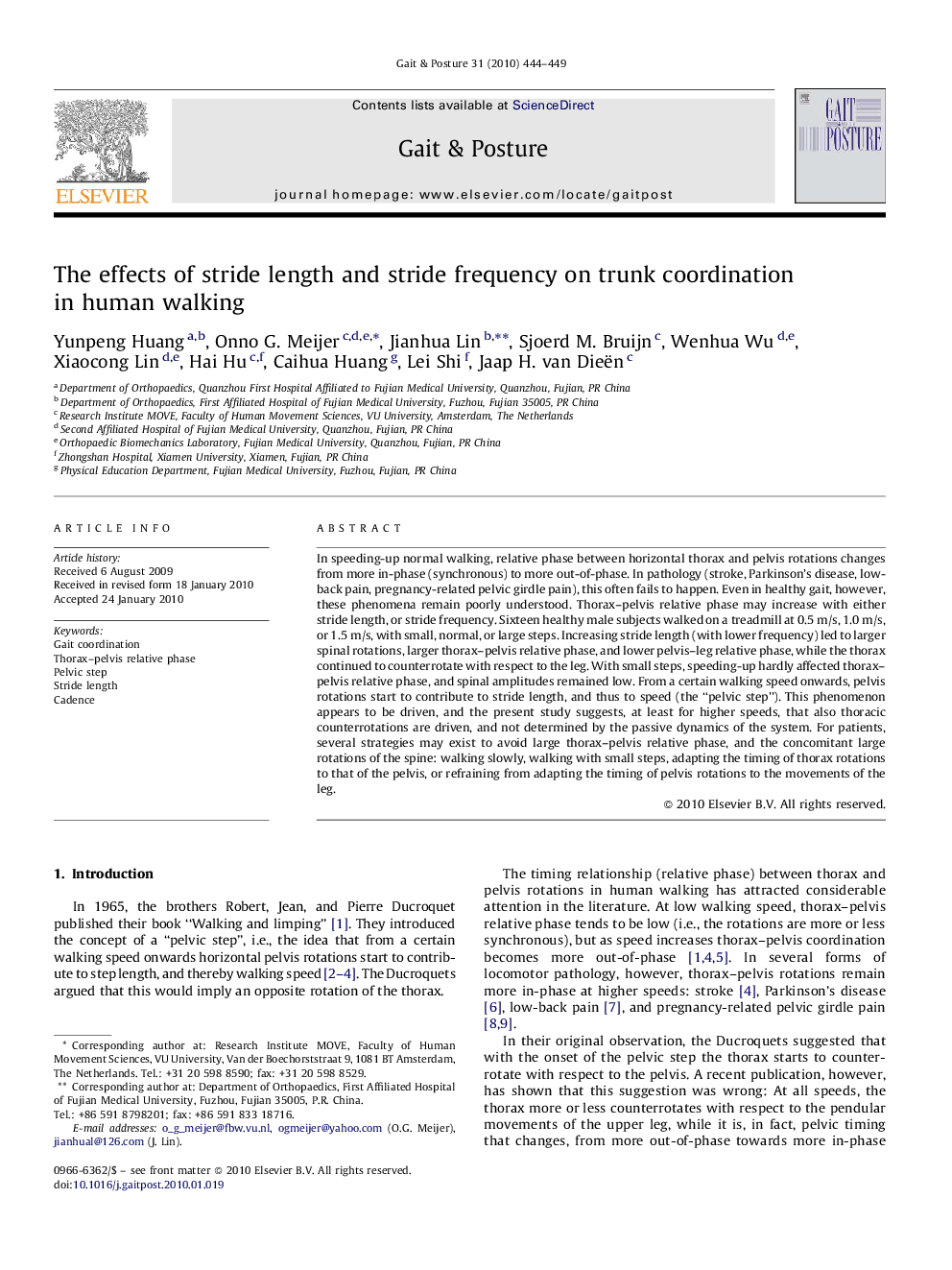| Article ID | Journal | Published Year | Pages | File Type |
|---|---|---|---|---|
| 4056626 | Gait & Posture | 2010 | 6 Pages |
In speeding-up normal walking, relative phase between horizontal thorax and pelvis rotations changes from more in-phase (synchronous) to more out-of-phase. In pathology (stroke, Parkinson's disease, low-back pain, pregnancy-related pelvic girdle pain), this often fails to happen. Even in healthy gait, however, these phenomena remain poorly understood. Thorax–pelvis relative phase may increase with either stride length, or stride frequency. Sixteen healthy male subjects walked on a treadmill at 0.5 m/s, 1.0 m/s, or 1.5 m/s, with small, normal, or large steps. Increasing stride length (with lower frequency) led to larger spinal rotations, larger thorax–pelvis relative phase, and lower pelvis–leg relative phase, while the thorax continued to counterrotate with respect to the leg. With small steps, speeding-up hardly affected thorax–pelvis relative phase, and spinal amplitudes remained low. From a certain walking speed onwards, pelvis rotations start to contribute to stride length, and thus to speed (the “pelvic step”). This phenomenon appears to be driven, and the present study suggests, at least for higher speeds, that also thoracic counterrotations are driven, and not determined by the passive dynamics of the system. For patients, several strategies may exist to avoid large thorax–pelvis relative phase, and the concomitant large rotations of the spine: walking slowly, walking with small steps, adapting the timing of thorax rotations to that of the pelvis, or refraining from adapting the timing of pelvis rotations to the movements of the leg.
